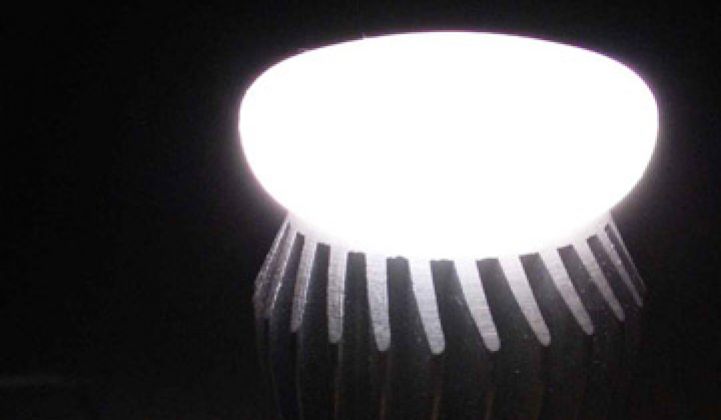Google will dip its toe into LED lighting by developing a bulb that is controllable from an Android phone.
Lighting Science, a rapidly growing company based in Florida, will develop the 60-watt-equivalent LED bulb with Google. Lighting Science brings the bulb know-how to the table, and Google brings software, controls and a whiff of celebrity.
The idea is to allow users to be able to dim or shut off their bulbs remotely or to program them. When you walk into the room, your phone will sense your presence there and have your house give you the red light treatment. This means, of course, that Google is ultimately getting into home area networks and lighting networks. There's no reason the same basic technology couldn't be used in commercial office buildings, too. As a result, Google may compete soon against Adura, Lumenergi, Redwood Systems, Daintree Networks and the other firms in this market. So far, most of the lighting networking companies focus on commercial office buildings and datacenters and most of the home networking companies have focused on heaters and air conditioners, not lights. Google and Lighting Science, as a result, are filling a gap of sorts.
The bulbs will communicate through a Wi-Fi network anchored by a home router. Exploiting Android and tools in the home like DSL boxes could make home networking fairly cheap. The only added hardware expense comes in the Wi-Fi chips. Many companies make Wi-Fi chips and GainSpan makes a low-power version. To this point, Wi-Fi has trailed ZigBee in home networking, but advocates have said that Wi-Fi is a better fit.
The bulb strategy could also revive Google's ambitions in the home. PowerMeter has been adopted by a few utilities, but it's not exactly taking the country by storm. PowerMeter was from the first generation of home networking products that were based on the somewhat ambitious idea that people mostly needed information to curb consumption. Google will dip its toe into LED lighting by developing a bulb that is controllable from an Android phone.
Lighting Science produces one of the better value LED bulbs. We tested its 40-watt equivalent bulb last year and it bested both the Philips EnduraLED and the Phaorox from Lemnis Lighting, but it cost less at $18. The only flaw was that it buzzed in certain dimmer sockets: a problem, LED execs tell me, that can be cured by different component sourcing in the future. It wasn't as good as the new superbulbs from Qnuru or LEDnovation, but those cost over $60.
Competition, though, continues. At LightFair next week, expect to see more about the Switch, a liquid-filled LED bulb that puts out even more light and will cost around $20 in the fourth quarter.



